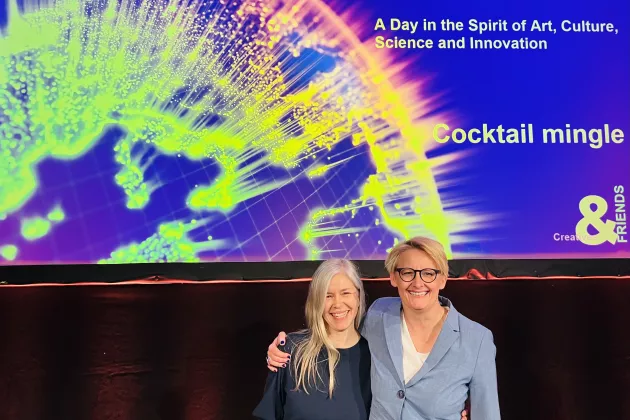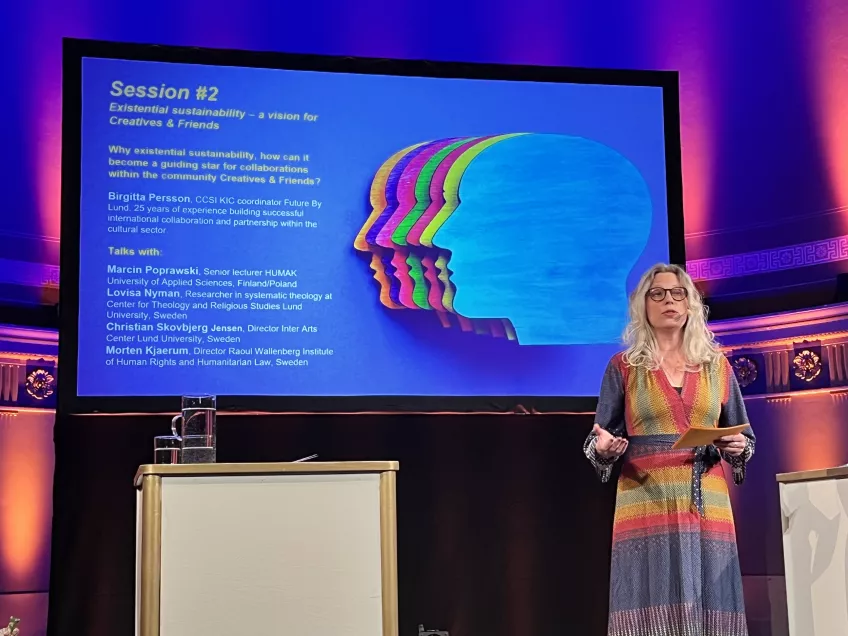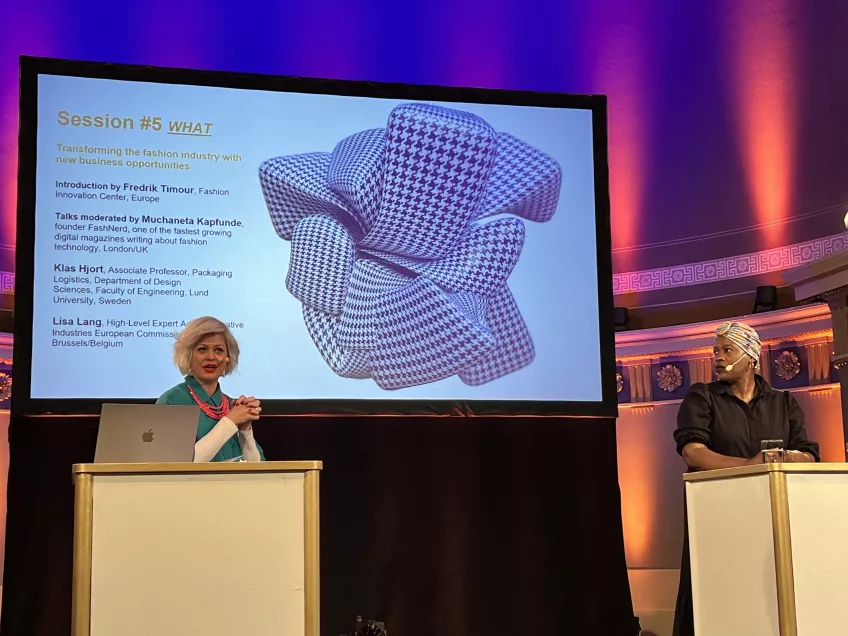Held in a packed university auditorium, the event was aimed at anyone interested in joining the Creatives & Friends network, which has now been established with industry, researchers, entrepreneurs and cities. The day functioned as a kick-off event for people to meet and interact.
“Creativity and innovation are at the heart of every university. Lund University's motto is to understand, explain and improve our world and the human condition. We are ready to play our part and we invite you to join us,” was the message conveyed by Vice-Chancellor Erik Renström in his opening speech.
During the afternoon, several examples were presented of how cultural and creative sectors and industries are driving change. It was also highlighted that Lund University is a ‘cultural kaleidoscope’ in which culture and creativity are expressed in many ways.
For the Creatives & Friends network, existential sustainability is what holds together the things you wish to achieve in a change process. So, what is existential sustainability?
“Not all development is positive. We need to reflect on what is important and what affects our sustainable existence in the change process we need to carry out in order to tackle social challenges,” said Charlotte Lorentz Hjorth, project manager at LU Collaboration.
“We live in an unpredictable world, but culture and creativity can help us navigate and develop. We just have to get started,” said Kristina Eneroth, Pro Vice-Chancellor for Collaboration at Lund University.
KIC FACTS:
The European Institute of Innovation and Technology (EIT) is an EU body that aims to strengthen Europe’s ability to innovate. The EIT is an important part of Horizon Europe, the EU’s key funding framework for research and innovation.
An EIT Knowledge and Innovation Community (KIC) brings together partners from industry and business as well as research and higher education, with the aim to strengthen innovation ability. There are currently eight KICs, which all focus on specific areas such as climate change, sustainable energy and digitisation.
The Creative Futures application consists of 50 core partners from 20 different European countries. Lund University is the only Swedish core partner. The evaluation of the applications for the EIT Culture KIC has now begun and is expected to be finalised within a couple of months.


